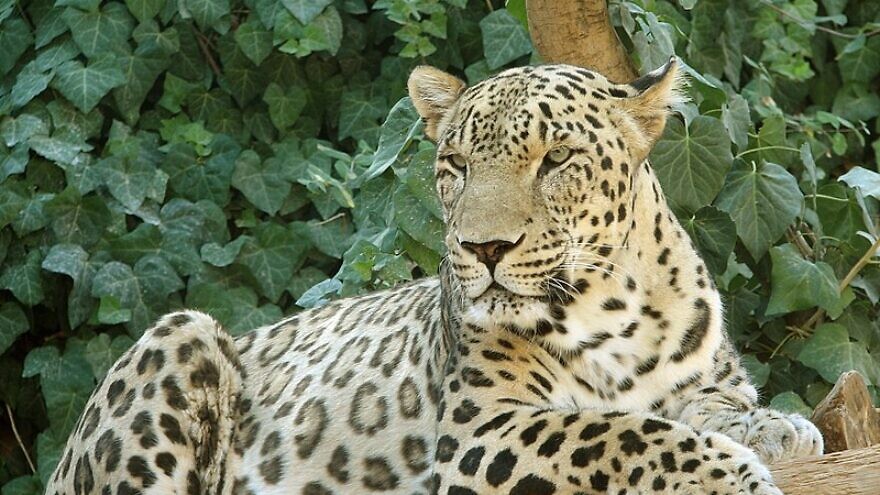After arriving from France, 2-year-old Mademoiselle is acclimating to her new home before meeting her planned mate, Coresh
After arriving from France, 2-year-old Mademoiselle is acclimating to her new home before meeting her planned mate, Coresh


A two year old Leopard cub has arrive in Israel from France as a part of a desperate effort to save an endangered species.
The Persian leopard considered an Endangered species by the International Union for Conservation of Nature (IUCN) Red List. Less than 1,300 of the rare predator are believed to live in the wild.
This despite the wide range of the leopard which spans Iran, Iraq, Turkey, Azerbaijan, Armenia, Georgia, Russia, Turkmenistan, Kazakhstan, Afghanistan, and Pakistan. In two Central Asian states: Tajikistan and Uzbekistan they are now believed to be extinct.

Staff at the Ramat Gan Safari, near Tel Aviv, had asked the public for suggestions for a name for the 2-year-old Persian leopard. She was previously in the Beauval Zoo in France’s Loire Valley.
The leopards will be placed in the same den to familiarize themselves with each other’s scent. Once the safari crew determines that the couple is interested in the encounter, they will be permanently placed in a den together.
“The couple was not chosen as mates randomly,” said Safari zoologist Keren Or, according to the report. “She has been intended for Coresh from birth based on specific information and family ties and has been trained in both French and English ahead of her arrival.”

The two felines will participate in a project to reproduce the species, which intends to populate European zoos with 200 leopards and release some of them into the wild. The Ramat Gan Safari, whose full name is the Zoological Center Tel Aviv-Ramat Gan, has the largest collection of wildlife in human care in the Middle East.

According to Reuters, most Persian leopards are in Iran and Afghanistan. Iraqi Kurdish conservationist Hana Raza estimates there may be 25 left in Iraq. The animal is listed as endangered by the International Union for Conservation of Nature (IUCN).
A bond between these two species calls for a long and complex process, requiring patience and strategy.At first, the leopards will be put in the same den and familiarize themselves with their smell. Once the safari staff recognize that there is a mutual interest in the encounter, the couple will be permanently placed in a den together.All that’s left for the new member of the safari to do before meeting Coresh is chosen a name.
Safari zoologist Keren Or said survival of the sub-species is important for the stability of the ecosystem.”The couple was not chosen as mates randomly,” Or said. “She has been intended for Coresh from birth based on specific information and family ties and has been trained in both French and English ahead of her arrival.”
Panthera pardus tulliana, AKA the Perisan Leopard, is considered an endangered species. Hence, the two tigers at the Ramat Gan Safari will take part in a project to reproduce the species, which aims to populate the European zoos with 200 leopards total and return some of them to nature.Aside from the concern about the future of this subspecies, the Persian Leopards are the only remaining apex predators in the region.

“Efforts like this one to save the Persian Leopard are important,” says Cyril Christos a photographer, author of “Lords of the Earth: The Entwined Destiny of Wildlife and Humanity,“and environmentalist, “there is no going back.We must fight as never have to tell the children of the future, in a tragic twist on the title of Maurice Sendak’s classic picture book—this is where the wild things were.”
Produced in association with Jewish News Syndicate.
(Additional reporting provided by Lennox Kalifungwa)

